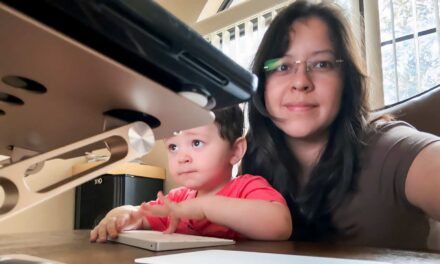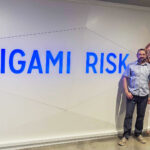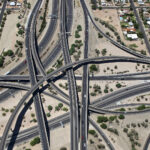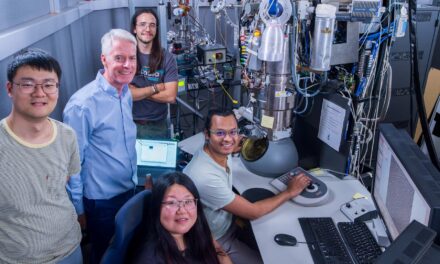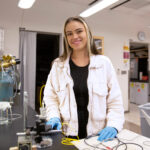
Essential reading
Not everything one needs to learn about how to become a successful engineer is in textbooks.
Many valuable lessons can be found in works of nonfiction and fiction that cover subject matter ranging across an expansive landscape of human endeavor.
Here, 10 faculty members in Arizona State University’s Ira A. Fulton Schools of Engineering recommend books they say aspiring engineers should delve into during their formative college years.
The books offer drama, whimsy, wisdom, history, humor, fantasy and financial advice that provide insight applicable to careers in science and engineering – and to life beyond one’s profession.
For more book recommendations from other ASU engineering faculty members, see previous Essential reading features: Essential Reading 2012 and Essential Reading 2013.
# # #
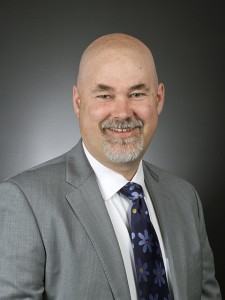 Daniel Bliss
Daniel Bliss
Associate Professor
School of Electrical, Computer and Energy Engineering
“Surely You’re Joking, Mr. Feynman!” by Richard Feynman
While this “autobiography” has been suggested previously, I’ll suggest it again. What comes across in the text is that Feynman is both a wonderful and sometimes flawed individual. However, what really stands out in the text is his deep curiosity about how the universe works. This curiosity and willingness to challenge the status quo leads to fundamentally disruptive and creative ideas. These ideas, for example, led to significant contributions to a viable approach for evaluating quantum electrodynamics (QED), which has driven much of physics, and consequently some aspects of engineering, ever since. Like Feynman, we should keep our eyes open for chances to be constructively disruptive. We should attempt to acquire all the mathematics and physical insight available. With these tools, we should constantly challenge our assumptions. As Feynman did, given these tools and the willingness to be disruptive, we may create fundamentally new ideas, approaches and techniques. The challenge for which Feynman does not provide much guidance is on how to use these technologies to make the world a better place.
“The Hitchhiker’s Guide to the Galaxy” by Douglas Adams
Life is full of absurdity. I’m not saying that the laws of physics are violated, but sometimes the stresses that come with life can get to any of us. The earlier that you accept that it happens to all of us, and the best that you can do in these times is surf the chaos going on around you, the easier it will be. Fortunately, Douglas Adams created a fictional universe that is even more absurd than the one in which we live. If you can become comfortable with Douglas’s universe, then this one seems pretty reasonable by comparison. Just don’t forget your towel.
# # #
 Aditi Chattopadhyay
Aditi Chattopadhyay
Regents’ Professor
Ira A. Fulton Professor of Mechanical and Aerospace Engineering
School for Engineering of Matter, Transport and Energy
“Outliers: The Story of Success” by Malcolm Gladwell
Although as educators we believe there is a direct connection between effort and reward, when we celebrate success we map it out to personal traits (such as a person’s IQ). Gladwell presents an effective argument against this stereotype through interesting examples, illustrating that an optimal combination of hard work, motivation and the right environment is a key to becoming a high achiever. My favorite quote from the book is, “Practice isn’t the thing you do once you’re good. It’s the thing you do that makes you good.” This is an immensely engaging book that reminds those of us who are engaged in the education business that high IQ, while desirable, does not supplant hard work and the right environment as keys to success, and that even the most famous and successful people had to work for it (Gladwell says mastering a particular skill takes approximately 10,000 hours of effort!). One key example is the young Bill Gates, who was provided with unlimited access to a time-sharing terminal in 1968 and made effective use of it. What if other teenagers had been given the same opportunity?
“What Do You Care What Other People Think? Further Adventures of a Curious Character” by Richard Feynman
Nobel Prize-winning physicist Richard Feynman’s last literary legacy is a collection of reminiscences of his life’s experiences that are sometimes light-hearted and yet often poignant. It is the story of a man who always questioned every hypothesis, always searching for answers, and was oblivious of what others might think. Feynman’s passion for life, his curiosity, and his relentless search for answers are contagious. There is also the personal side of this brilliant scientist who had to overcome personal tragedies. An interesting part of the book is Feynman’s investigation of the Space Shuttle Challenger explosion. His simple yet elegant experiment of dropping a ring of rubber into a glass of cold water and pulling it out revealed the issues with the faulty O-rings that were not meant for really low temperatures. There is much to learn from this book — the most important lesson being that as engineers and scientists we need to keep an open mind when trying to solve problems. Sometimes the simple truth is right in front of us if we only knew where to look! We have all had those moments.
“The Tipping Point: How Little Things Can Make a Big Difference” by Malcolm Gladwell
This is an immensely engaging book that brings to the forefront a very important message: Little things can add up to a big change. Through several examples in history, Gladwell depicts how the dissemination and proliferation of small ideas led to dramatic changes in the world. He also discusses the factors that lead to this tipping point and the type of person or persons it takes to make that change and the contexts in which they operate. His discussion as to how to find that magical moment – the Tipping Point – is fascinating, and everyone, including teachers and students, can benefit from it. Recognizing the value of ideas and dissemination of such ideas is an important starting point that can lead to that tipping point, especially for people in the engineering community.
# # #
 G. Edward Gibson, Jr.
G. Edward Gibson, Jr.
Director, School of Sustainable Engineering and the Built Environment
Professor and Sunstate Chair of Construction Management and Engineering
“Unbroken” by Lauren Hillenbrand
This nonfiction book follows the story of Louis Zamperini, from his formative years to his rise as a track star at the Olympics in Berlin in 1936 to his years as an Air Force pilot in World War II and subsequent years as a prisoner of war in Japan. It is an extraordinary story of one man’s life and spirit, unbroken by even the most daunting challenges. In the story, Louis survives some of the most horrible conditions that a human can endure, and then slides into an even more difficult life after the war, only to find retribution, forgiveness and a purpose in his life. It is an inspiring story.
“Nothing Like it in the World” by Stephen Ambrose
This is the story of the men who built the transcontinental railroad in the United States from the late 1840s to the 1880s. The story focuses on visionary leaders such as Abraham Lincoln, and great engineers such as G.M. Dodge and Theodore Judah. It shares the politics of the day, the businessmen who made the project happen and the companies that were formed as a result, such as the Union Pacific Railroad. Most of all it pays homage to the great effort and perseverance required to unite the Pacific and Atlantic oceans by rail. Scandal, dishonesty, wealth, poverty, death and eventually triumph all go into making this story a great read. It is a window into the formative years of the United States as it continued on its path to becoming a superpower in the 20th century. As you absorb the details of this seminal 19th century undertaking, you will find that many of the same kind of headlines of that time and age are still being seen in the news today.
# # #
 Subbarao Kambhampati
Subbarao Kambhampati
Professor
School of Computing, Informatics, and Decision Systems Engineering
“Dealers of Lightning: Xerox PARC and the Dawn of the Computer Age” by Michael A. Hiltzik
It has been said that in the 1970s, nearly half of top 100 computer scientists and engineers in the world worked for just one research lab: the legendary Xerox Palo Alto Research Center. Most things we associate with modern computing — bitmapped displays, drag-and-drop windows, object-oriented programming, and the Ethernet, all came from those labs over a short span of time. “Dealers of Lightning” tells the engrossing true story of these larger-than-life figures and the age of computing that they brought about out of the whole cloth. The ironic part, of course, is that Xerox never managed to capitalize on its own inventions. There are fascinating lessons here for all engineers, not only about the conflicts between individual genius and teamwork, but also about how the best engineers and their inventions can be thwarted by a myopic management.
“Isaac Newton: The Last Sorcerer” by Michael White
Before you exclaim, “A Biography of Newton? How unoriginal,” let me hasten to add that this is not your physics teacher’s hagiography of Newton the saint, but rather the story of Newton the man of many human foibles, who literally stood at the twilight between magic and science, and was driven as much by a desire to understand the universe around him, as by the belief in the occult and alchemy. Read it to appreciate the decidedly non-saintly origins of some of the holiest scientific and engineering theories.
# # #
 Sayfe Kiaei
Sayfe Kiaei
Professor
School of Electrical, Computer and Energy Engineering
“Minus 148 Degrees: The First Winter Ascent of Mount McKinley” by Art Davidson
During the first winter ascent of Alaska’s Mount McKinley (named Denali, or “The Great One,” by the Athabascan people) – the highest peak in North American at more than 20,000 feet in altitude – the wind-chill factor caused the temperatures to drop to minus-148 degrees! Climbers Art Davidson, Dave Johnston and Ray Genet became the first to set foot on McKinley’s summit in winter, but they were given up for dead after they tucked themselves for six days into a snow cave on the summit ridge. All three suffered extensive frostbite. Unfortunately, one of the climbers lost his life in a fall into a crevasse. This amazing tale of their adventure is a must-read book that will keep you up until you finish it.
“Shantaram” by Gregory David Roberts
“Shantaram” will be among the top three to five books you ever read in your life, and it will take you five to 10 years to find another book like this one. “Shantaram” is the life of the author Gregory David Roberts. Roberts was sentenced to 20 years in prison in Australia after being convicted of a series of armed robberies. He escaped in 1979 and went to India with a fake New Zealand passport. After someone stole all of his belongings, he moved to a slum in the outskirts of Mumbai. After a massive fire in the slum, he sets up a free health clinic to contribute to the community. He learns about the Indian culture and becomes fluent in Marathi. He helps battle an outbreak of cholera and helps lepers and others suffering afflictions. It is an amazing story that captivates you on page one and sustains the pace through every one of its 920 pages.
“The Violinist’s Thumb, And Other Lost Tales of Love, War, and Genius, as Written by Our Genetic Code” by Sam Kean
This a great book that shows how genes can explain why some people have exceptional skills, why Einstein was a genius and why people with exceptional thumb flexibility can become world-class violinists.
# # #
 Micah Lande
Micah Lande
Assistant Professor
Engineering and Manufacturing Engineering – Polytechnic Campus
“The Ice Palace That Melted Away: Restoring Civility and Other Lost Virtues to Everyday Life,” by Bill Stumpf
As engineers, we strive to make the world better. In this book the designer of the popular Aeron office chair shares his personal manifesto for how mindful design can support civility, what that means, and how the stuff we interact with everyday can help to make life more civil in both small and large ways. For me, this is a hallmark of people-centered innovation. It’s a quick read that I like to revisit periodically to restock the hope and optimism useful to drive innovation and change in our communities — change that is possible because we are engineers.
# # #
 Heather Pon-Barry
Heather Pon-Barry
Assistant Professor
School of Computing, Informatics, and Decision Systems Engineering
“The Great Eskimo Vocabulary Hoax and Other Irreverent Essays on the Study of Language” by Geoffrey K. Pullum
When I was an undergraduate, I read “The Great Eskimo Vocabulary Hoax” essay by linguist Geoffrey Pullum and became fascinated by the study of language. If you would answer “100” to the question of how many words Eskimos have for snow, then you should certainly read this. The essay is highly amusing, as suggested by the title, and the same is true of the collection as a whole. While the essays focus on the study of language, they are broadly applicable to engineers and scientists — much of the content is about the larger context of scientific inquiry and scholarship.
# # #
 Laurie Ralston
Laurie Ralston
Lecturer
Graphic Information Technology
“The Non-Designer’s Presentation Book” by Robin Williams
Having come from the world of industry conferences before returning to graduate school, I saw many brilliant people give awful and ineffective presentations. A lack of understanding about basic presentation design can result in, at best, a distracting and confusing message, and at worst a failure of delivering the message at all. Robin William’s book, “The Non-Designer’s Presentation Book,” is straightforward and to-the-point and provides many basic graphic design fundamentals. Implementing even one method from the book will noticeably improve any student (and many faculty!) presentations.
“Steal Like an Artist” by Austin Kleon
This deceptively slight book packs a powerful punch, encouraging its readers to look for ideas and creativity everywhere. Aimed at designers, Kleon’s message applies to every discipline, explaining that essentially no ideas are original but instead built on the work of others. Fun, easy to digest and brief, “Steal Like an Artist” provides humorous but practical ways to spark creativity by getting out in the world, investigating things that interest us, sharing our own ideas with the world and building new and innovative ideas from our interactions with others. This is perfect reading for the ASU culture!
# # #
 Rosalind Sadleir
Rosalind Sadleir
Assistant Professor
School of Biological and Health Systems Engineering
“My Family and Other Animals” by Gerald Durrell
This might seem like a strange book to recommend to budding engineers. It’s the childhood autobiography of the naturalist, zookeeper and author Gerald Durrell (1925-1995), describing his family’s occupation of the Greek island of Corfu in the immediate postwar period. The thing that stands out to me in this book is young Gerald’s intense curiosity, his joy in exploring the island and its many different environments, and the single-minded way he goes about collecting and learning about and from the land and sea animals, plants, and sundry peculiar people. The book demonstrates an uplifting sense of awe of the natural world. Engineers should possess the same appreciation and respect for the systems, structures and organisms they work with. This book is a fantastic one for starting off that process.
“Report of the Presidential Commission on the Space Shuttle Challenger Accident” (Available at history.nasa.gov/rogersrep/genindex.htm)
This report and its recommendations, published over the period from June 1986 to June 1987, investigates the causes behind the Space Shuttle Challenger disaster on January 28, 1986. The Challenger crash was avoidable. However, the commission found that a nasty confluence of faulty mechanical design and poor communication, as well as inadequate safety protocols, resulted in the complete loss of the shuttle and its crew of seven. The report gives a fascinating overview of all the factors that contributed to the accident. It shows that even very small systems (an engine motor joint) can be critical to the survival of an entire project. It was found that program managers of the space shuttle program were not directly answerable for shuttle program safety, and were pressured to maintain a high launch rate. At this stage of the shuttle program there were plans for up to 24 flights per year. The pressure to meet this goal meant that not enough personnel were available to keep up with things like the demand for spare parts and payload and mission schedule changes. Few experienced astronauts were in management positions, even though former astronauts were thought best suited to appreciate safety and flight operations. Engineering at any level involves a lot of communication, and even tiny hiccups can lead to disaster. The overall management structure and the responsibility and experience of those in charge can make a crucial difference between failure and success.
# # #
 Timothy Takahashi
Timothy Takahashi
Professor of Practice
School for Engineering of Matter, Transport and Energy
“Where Are the Customers’ Yachts?” by Fred Schwed
I recommend a book about money. But one that is a rather contrarian, like so many of my favorites both technical and nontechnical. Schwed wrote “Where are the Customers’ Yachts?” 80 years ago, during the recovery from the Great Depression. Like Shakespeare, it concerns timeless ideas: power, greed, money and the perils of unequal bargaining power and unequal access to information. Similarly, it wraps tragedy inside of a comedy (but it’s an easier read!). Here is how it goes: Engineering finance, like personal finance, revolves around the idea of maximizing income. In other words, the more you successfully bill people who can pay you, the more money you make. The title of this book refers to an anecdote: A visitor to New York admires the yachts of the bankers and stockbrokers. Naively, he asks where all the customers’ yachts are? Of course, none of the customers could afford yachts, even though they dutifully followed the advice of their bankers and brokers. This is the irony behind so much of what drives modern “big engineering”: Its business is business. It isn’t about enabling creative product design, bettering the world, ennobling technologists who work in the field or even enriching the shareholders who own its stock. But the arrows Schwed slings aren’t aimed only at business moguls. He spends equal time skewering susceptible “little guys” who think that they can reliably outperform the herd without putting in the hard work of learning how the world really works. Amusing yet disturbing. Schwed doesn’t promise you a get-rich scheme, but his wit and wisdom is well worth reading.
Media Contact
Joe Kullman, joe.Kullman@asu.edu
(480) 965-8122
Ira A. Fulton Schools of Engineering












